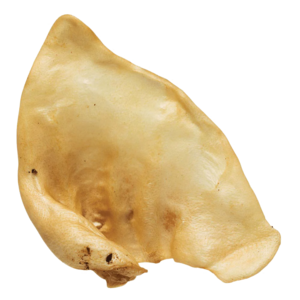Redbarn Natural Dog Chews Puffed Sow Ears Review
PawDiet has been helping pet owners since 2015. To fund our efforts, articles may include affiliate links; if you buy something through a link, we may earn a commission.
Review of Redbarn Natural Dog Chews Puffed Sow Ears
According to our most recent data, this product is intended for intermittent or supplemental feeding only.
Review of Ingredients
In our review of Redbarn Natural Dog Chews Puffed Sow Ears, we'll examine all 1 ingredients and highlight the nutritional contribution of each ingredient.
While the first few ingredients typically dominate the recipe's composition, ingredients in small quantities can still have a meaningful impact on the overall nutritional profile of the recipe.
Pork ear is a natural, high-protein chew that provides mental stimulation and promotes dental health for your dog. It helps reduce plaque and tartar buildup, leading to a cleaner mouth and fresher breath.
Review of Guaranteed Analysis
Crude Protein (min) of 90.00%: The high crude protein content in this product is directly attributed to the single ingredient: pig ears. Pig ears are primarily made up of connective tissue which includes collagen, a protein. This high level of protein is typical for animal-based products, especially those that are dehydrated or dried, as is often the case with natural chews for dogs. The drying process removes water content, which concentrates the protein in the remaining material.
Crude Fat (min) of 1.00%: The low crude fat content suggests that during the preparation of the pig ears, much of the natural fat that would be present in the tissue is removed. This could be achieved through trimming visible fat and/or through a cooking process that renders out fat. Pig ears naturally contain more fat than this, so the preparation process is likely designed to minimize the fat content to make it a leaner treat for dogs.
Crude Fiber (max) of 1.00%: The crude fiber content in pig ears is inherently low because animal tissues do not contain dietary fiber. The maximum of 1% crude fiber indicates that there is very little to no plant-based material in the product. Any fiber present would be incidental and could come from the pig's ear cartilage or any remaining hair that wasn't completely removed during processing. However, given that pig ears are almost exclusively protein, it's expected that the fiber content would be minimal.

